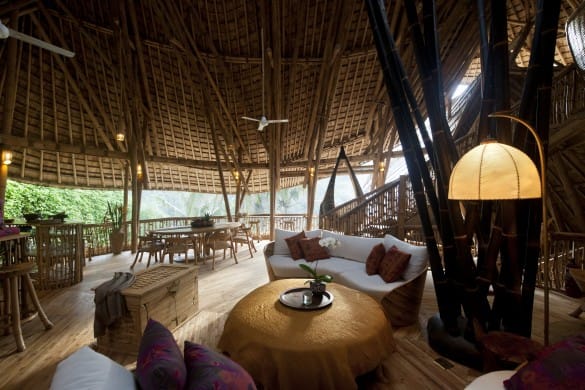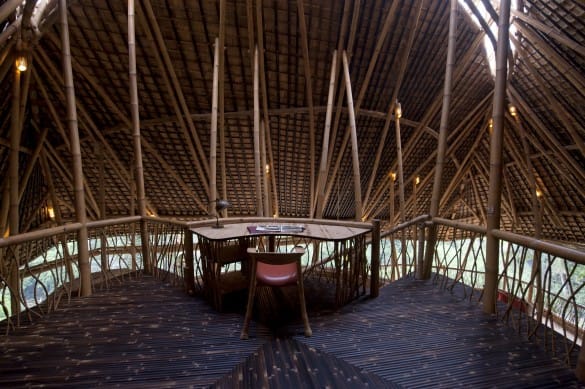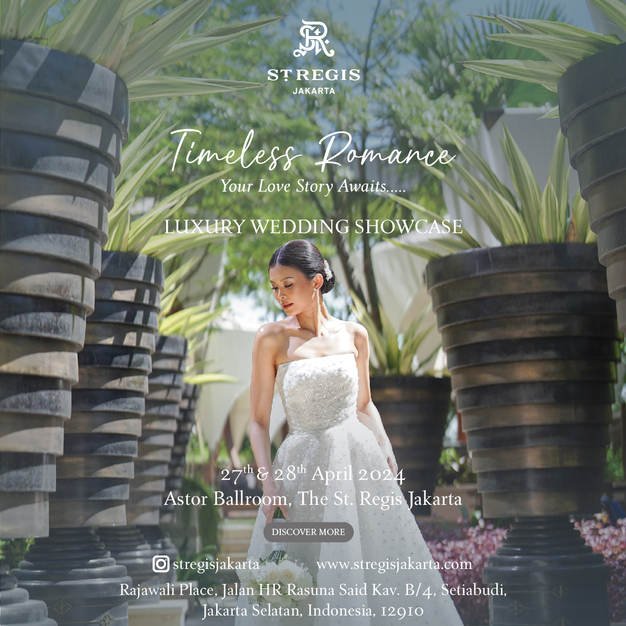“Notice that the stiffest tree is most easily cracked, while the bamboo or willow survives by bending with the wind,” the martial artist and actor Bruce Lee once said.
Flexible, yet strong, bamboo makes an ideal material for building environmentally sustainable housing. IBUKU, a team of designers, architects and engineers eager to explore new ways of using the plant, are taking advantage of these special qualities. The Bali-based company is the mastermind behind The Green Village, a one-of-a-kind community of luxury abodes, which are around 95 percent bamboo, located just outside Bali’s cultural hub of Ubud.
The Green Village is the sister complex to the nearby Green School, a cluster of around 50 bamboo structures nestled amid forest and rice fields, founded by John Hardy in 2008.
“There are currently 11 residences in the Green Village itself, which we have built over the past six years. Sharma Springs – a six-storey, four-bedroom house – is located on a separate property across the river from the Green Village, but is also managed as a part of the Green Village,” says Elora Hardy, the founder and creative director of IBUKU. “There are opportunities for between two and five additional residences on the two hectares of land.”
All the multi-storey homes are custom designed to each client’s specific preferences, and most have open-plan living areas, round centre-pivot doors, swinging oval windows, spiral staircases and air-conditioned rooms with woven walls. The fully functional homes also come with bespoke furnishings – baskets, beds, chairs and tables – that are also mostly crafted from bamboo.

“We often create complete sets of new bamboo furniture designs for each home, or select existing items from our collection. This gives the interiors a cohesive look and feel that allows the form to shine through,” Hardy says. “We also love to feature complementary materials such as stone, brass and copper especially in areas that get wet, like bathrooms and kitchens.”
The ecological buildings, which are set on a steep edge along the sacred Agung River, are designed to blend into the tropical surroundings. In fact, according to Hardy, the most notable characteristics of the houses are the curves and the way the houses are integrated into the contours of the land. Right from the conceptual stage, IBUKU’s design process ensures that the homes have a minimal impact on the surrounding environment.

Bamboo has been used as a building material in Bali and Southeast Asia for centuries, although it has usually been used in the construction of short-term structures due to its susceptibility to termites and beetles. Bamboo is frequently used for temporary structures in Bali – everything from scaffolding to festival shades to dramatic ceremonial towers and figures such as the Nyepi ogoh ogoh and cremation bulls.
Significantly, new treatment methods have given bamboo a new lease on life. “Bamboo homes like ours that are designed and built by skilled craftsmen using properly treated bamboo will last a lifetime,” she says, adding that IBUKU’s bamboo is treated with a boron solution that makes it indigestible to insects. The roofing is checked and a finishing coat applied every few years.
IBUKU has chosen to use bamboo as its primary construction material not just because of its strength, beauty, and flexibility, but also because it is one of the most environmentally conscientious building materials imaginable. According to Hardy, bamboo has a four-year growth cycle, which means that it is a renewable resource. It also sequesters carbon dioxide in the fibres of the plant. The plant grows in clumps, which grow new shoots each year. If not harvested, the bamboo will eventually disintegrate, making room for a new generation.
The only non-bamboo materials, aside from the complementary materials used indoors, are the buildings’ foundations, which are made of steel and concrete, and the primary joints, which are secured with metal bolts.
“Many of the bamboo elements are connected with hand whittled bamboo pins which shrink and expand at the same rate as what they are supporting, resulting in joints that are strong and durable through humidity fluctuations,” Hardy says.
In fact, there has been so much interest in this versatile building material, that IBUKU has started a range of tours of the Green Village and its factory. “Several years ago, people literally came knocking at the factory gates asking to see more and learn how so we began offering tours and workshops,” Hardy says.
IBUKU’s tours take in not just the Green Village but also the nearby Green School, as well as the PT Bamboo Pure workshop, the headquarters of the factory. Those wishing for a more hands-on experience can take a two-hour class or a three-day workshop on how to make an architectural model out of hand-whittled bamboo sticks.
Hardy says that she hopes the Green Village will gradually change the common perception of bamboo as a cheap material only suitable for small and temporary structures. “Ultimately we have a dream of evolving Green Village into a community of around 180 homes within the Green School neighbourhood, alongside shops and other entrepreneurial endeavours,” she adds. “We are eager to show the world the amazing possibilities of bamboo and other natural materials.”

With the motto, “living a sustainable lifestyle is a process of learning by doing and remembering what we once knew and have forgotten over many generations,” the Green School is all about going back to basics. Located walking distance from the Green Village, the campus has been primarily constructed from bamboo, as well as alang-alang (local grass) and mud (for the walls). The focal point of the school is an impressive 60-metre-long and 19-metre-high pavilion constructed from around 2,500 bamboo poles. Better still, the environmentally friendly campus is powered exclusively by solar and hydro energy, and has water filtration and waste management systems.




